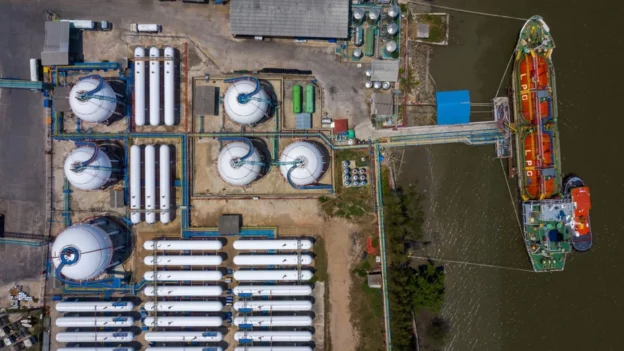Following the completion of required repairs and maintenance, the Freeport Liquefied Natural Gas (LNG) export plant, located in Texas, has returned to full operation this week. This is indicated by recent LSEG data, which also show that tankers have already started to come to the facility to load LNG.
In the context of this operational reestablishment, a significant fluctuation in gas prices has been observed. Previous shutdowns at Freeport, which is the second largest liquefaction facility in the United States, led to a drop in gas prices in the local market and an increase in the European market. A Freeport LNG representative confirmed that the plant is now operating without restrictions after several weeks of downtime.
Vessels on standby at the Freeport LNG facility
According to information provided by LSEG, the tanker Shinshu Maru was anchored at the Freeport LNG terminal last Wednesday, while the Flex Vigilant sailed the day before. In addition, three other tankers (Ignacy Lukasiewicz, LNG Enterprise and Prism Courage) were waiting offshore for their turn to load.
The plant’s natural gas consumption reached record levels last Wednesday, with usage of 2,121 billion cubic feet, the highest since May 2023. This plant has the capacity to produce up to 15 million metric tons of LNG per year, which is more than enough to supply about 5 million U.S. homes for a day, taking into account that only 1 billion cubic feet are needed for the latter.
Despite recent challenges, in late March, Freeport management anticipated that two of the three liquefaction trains, specifically 1 and 2, would be out of service until May for inspections and repairs, while Train 3 continued to operate. However, the latter closed temporarily around April 11.
It should be noted that each train has the capacity to convert approximately 700 million cubic feet of gas into LNG daily.
Follow us on social networks and don’t miss any of our publications!
Inspenet.com YouTube LinkedIn Facebook Instagram X
Source: pgjonline.com
Photo: Shutterstock

